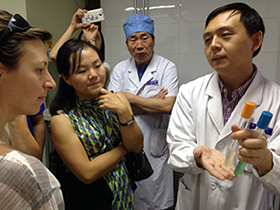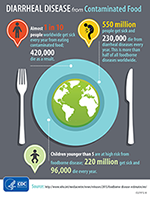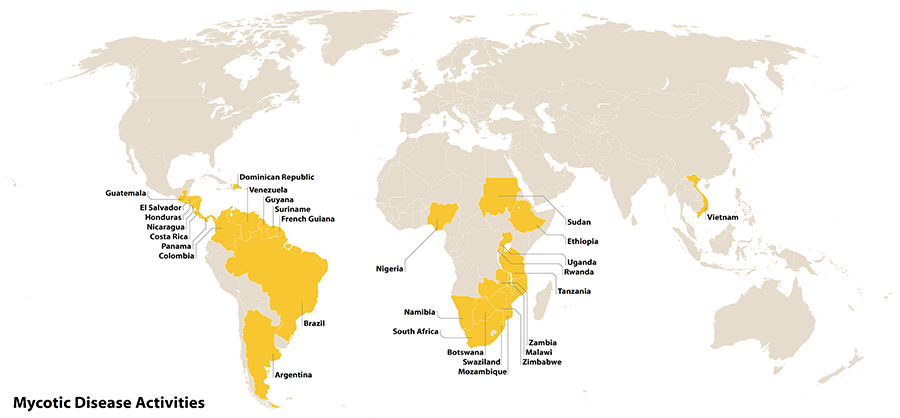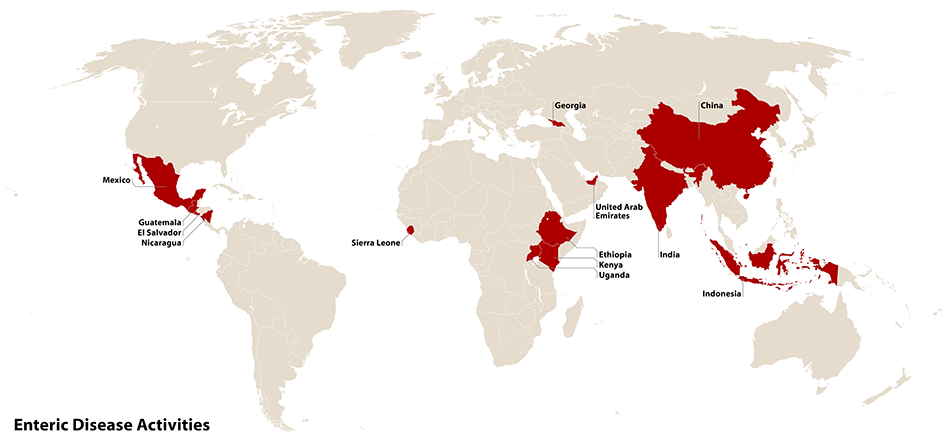Global Health Unit
The Global Health Unit (GHU) coordinates the Division of Foodborne, Waterborne, and Environmental Diseases’ (DFWED) global health activities. GHU helps to facilitate DFWED’s global vision to improve public health through building and strengthening capacity to prevent, detect, and respond to diseases caused by contaminated food, water, and fungi. The team works with many external partners and CDC programs to strengthen outbreak detection and surveillance systems.
Mission

Improve and promote global health preparedness by building capacity and developing enhanced surveillance systems to prevent, detect, and respond to foodborne, waterborne, and environmental diseases.
Vision
Ensure that all countries have the resources to prevent, detect, and respond to foodborne, waterborne, and envionmental diseases as well as support our global partners in developing effective strategies to control the spread of disease and stop outbreaks.
Global Impact of Diarrheal Diseases
Diarrheal Diseases from Contaminated Food
- Almost 1 in 10 people worldwide get sick every year from eating contaminated food; 420,000 die as a result.
- 550 million people get sick and 230,000 die from diarrheal diseases every year. This is more than half of all foodborne diseases worldwide.
- Children younger than 5 are at high risk from foodborne disease; 220 million get sick and 96,000 die every year.
Source: http://www.who.int/mediacentre/news/releases/2015/foodborne-disease-estimates/en/External
Diarrheal Diseases from Contaminated Water
- Globally, at least 2 billion people use a drinking-water source contaminated with feces.
- Unsafe drinking-water is estimated to cause 502,000 diarrheal deaths each year.
- An estimated 842,000 people die each year from diarrhea as a result of unsafe drinking water and inadequate sanitation and hand hygiene.
Source: http://www.who.int/mediacentre/factsheets/fs391/en/External
Where We Work
The Global Health Unit helps other countries increase their ability to prevent, detect, and respond to diseases from contaminated food, water, and environmental sources. The Global Health Unit (GHU) works with programs within the Center for Global Health (CGH) to address diseases all around the world, as part of its work to protect the health of U.S. citizens. The unit has focused on the following African, Asian and North and South American regions within the last three years. Please visit the PulseNet International page for more information.




